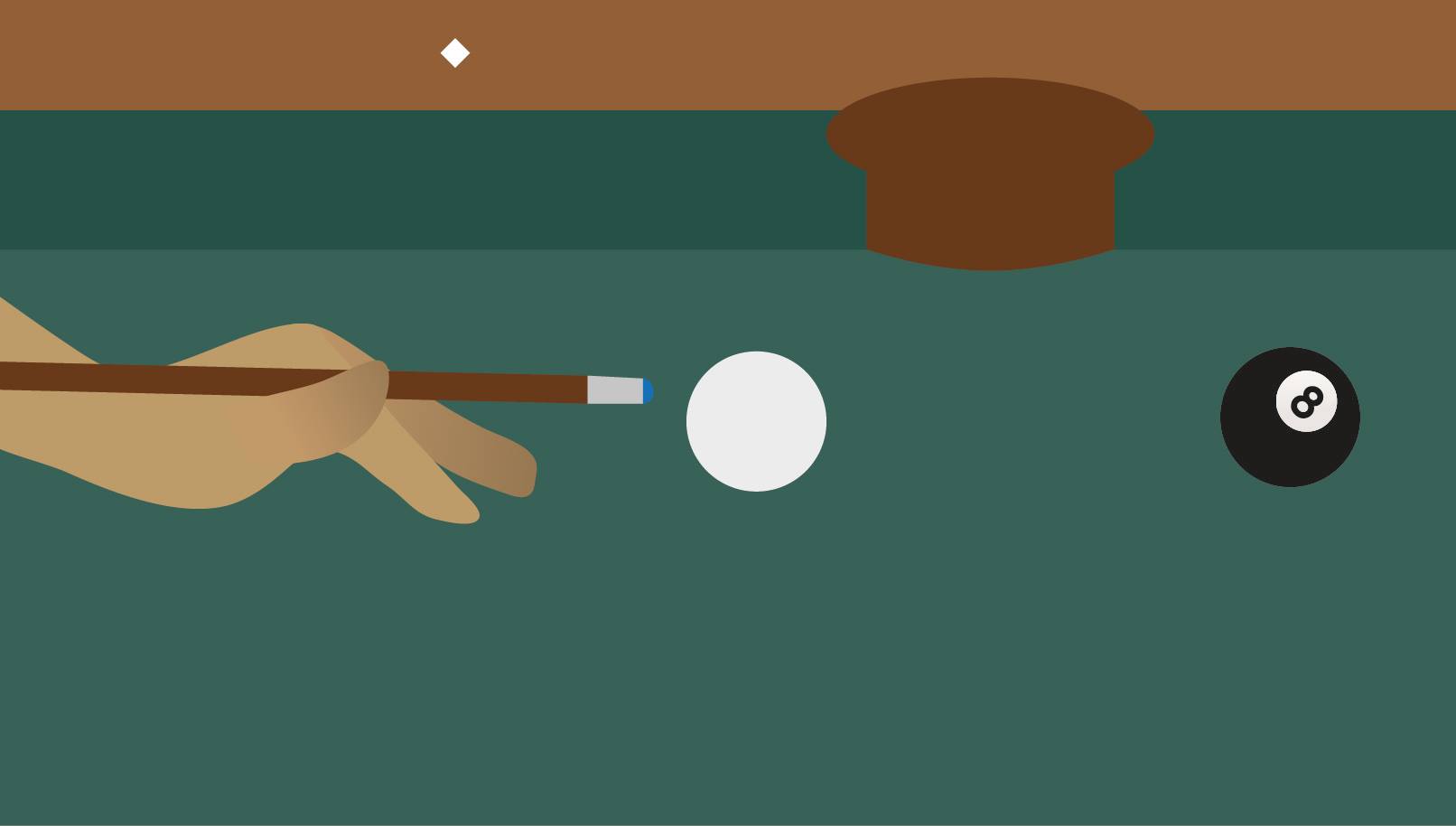Chapter 2: How To Bridge Properly

Bridging is often overlooked when players look at taking a shot. Most amateurs will just put the cue on their hand and hit the ball. Many don’t see the hand as an anchor but just something that’s necessary to do. Your mindset needs to change when it comes to bridging correctly.
Your hand should be thought of as an anchor, it should not move. The cue needs to rest on your hand which should be a solid platform. This platform then allows you to have the most stable shot. Your thumb should always be pressed against your first finger, this creates the V shape for the cue to rest in. Your palm should always be pressed and anchored into the table. Once you have this set up you can 100% focus on your cue action for the perfect shot.
Top-Spin
To hit a top-spin shot your bridge hand should be raised at the front, knuckles up to do this. Your palm should always remain flat and anchored. This lift in your hand means the cue will be aligned with the top of the cue ball ready to hit it for a top-spin shot.
Centre Shot
Your bridge hand should be slightly raised with your knuckles pushing slightly up. Make sure the cue tip is aligned with the centre of the ball to give you that nice clean shot.
Back-Spin
Your bridge hand should be as flat as possible. Your knuckles and palm should be flat with your palm anchored into the table. The more backspin you want to generate the flatter you want your hand. Many players tend to chip the ball when trying a back-spin shot. The reason this happens is because the bridge hand is raised too high, make sure this doesn't happen when you go for a back-spin shot.
The Loop Bridge
The loop bridge is used by American players. This is when the cue is put between the index and the 2nd finger to create that “loop”. The reasons English pool players don’t use this style of bridging is due to the different designs in English and American pool cues. Here are the differences:
- The American cue has the same shaft thickness from tip to centre of the cue
- The English cue has a tapered design, the cue gets thinner at the shaft as it goes down towards the cue tip
The American cue can be controlled using the loop bridge as the gap between the fingers (the loop) is constant as you pull the cue back and follow through. If you use an English cue and do this, as you pull back and follow through gaps will be created and the cue will move slightly and won’t give you the accurate shot you first planned. This is due to the cue having different thickness between tip and the centre of the cue.
Video Guide:
Additional Resources: